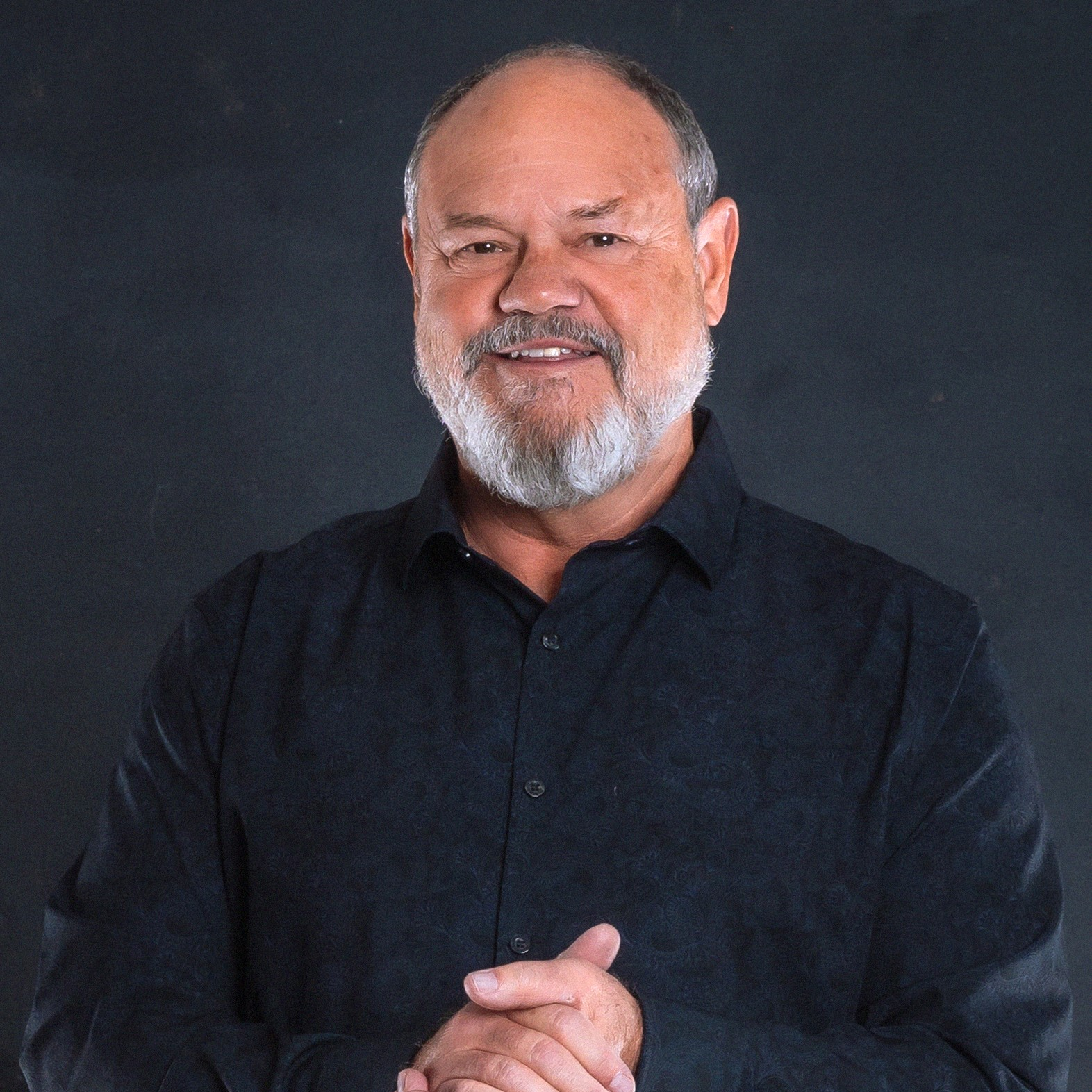Oracle Cloud Infrastructure (OCI) Full Stack Disaster Recovery has enhanced DR Plan management to automatically add and remove DR Plan Steps in existing DR Plans whenever DR Protection Groups member resources are changed. Full Stack DR now automatically modifies all DR plans in place, based on the members you add or remove from protection groups, preserving any custom steps you’ve added to plans.
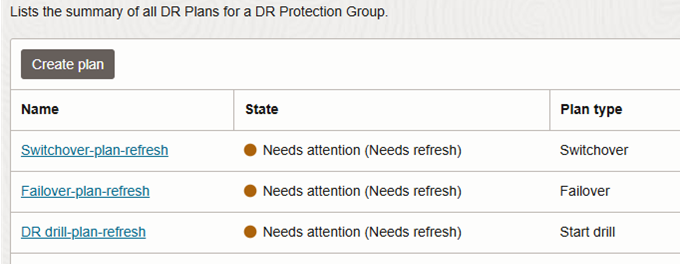
As your business systems and application stack evolve, your disaster recovery plans need to remain in lockstep. With this new feature, Full Stack DR makes it easy to manage these ongoing changes.
Maintaining the integrity of your recovery plans is job number one for disaster recovery administrators, and changes to member resources in protection groups have a profound impact on recovery steps in DR Plans. So, we’ve introduced the following simple workflow to help ensure plan integrity whenever protection groups change:
- Refresh: Refreshing a DR Plan makes it easy to see what has changed by tagging steps that were added or removed.
- Verify: Verifying a DR Plan commits the changes and activates the plan.
Let’s explore how easy using this new capability is. Adding, removing, or changing member resources in either the primary or standby protection group triggers the plan refresh workflow.
Updating member resources begins the process
Nothing changes about the way you add a member resource. You still choose the resource type and provide the appropriate properties needed to inform Full Stack DR what you need done with the object during a recovery.
Imagine that you want to add two more moving Compute instances to the DR Protection Group in the primary region, which currently contains two virtual machines (VMs) and a single volume group, as shown in figure 2.

After adding the two Compute instances, the protection group looks like Figure 3. It looks exactly like it has always looked after adding or removing member resources – nothing is different here.

Exploring the new workflow
Now you can begin to see the changes introduced with the enhanced plan management scheme. The state of all plans in the standby protection group changes to Needs attention (Needs refresh), while the plans in the primary protection group change to Inactive (Needs refresh).

None of the plans can run in this state, so your ability to recover is completely offline until the plan refresh workflow is completed in the standby protection group. You must select each DR Plan and then select the Refresh button, as shown in Figure 5. This selection forces Full Stack DR to inspect the members in both the primary and standby regions and update the plan in the standby protection group.

The refresh operation tags any plan steps that have been added or removed so you can see all the changes that will be made before the plan is updated permanently in the next step.

To accept and make changes permanent, select Verify.

The verify operation commits the changes, updates the plan, and removes the tags so everything appears as normal.

You must refresh all existing DR Plans contained in the standby protrection group. The resource list page for plans in the Oracle Cloud Console shows the state of all the plans, which can help you track your progress.
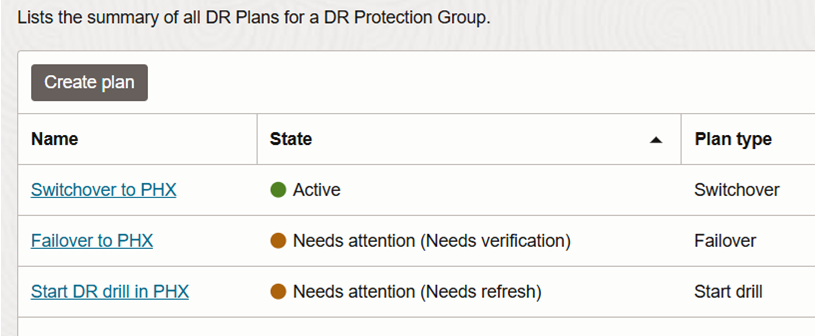
When all the plans in the standby protection group are active, you’re ready to go. You still must refresh the DR Plans in the peer region, but you can recover from outages in the primary OCI region at this point in the process. Plans always run from the standby protection group.
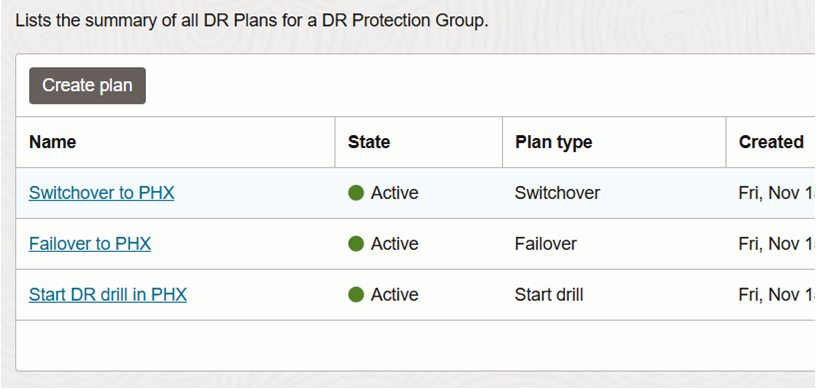
Refreshing plans in the primary protection group
The DR Plans in the primary protection group are still in an Inactive (Needs refresh) state and also need refreshing. However, you can’t modify recovery plans contained in protection groups with the primary role, including refreshing, and verifying. So, you must perform a switchover so that you can refresh the plans in peer region.
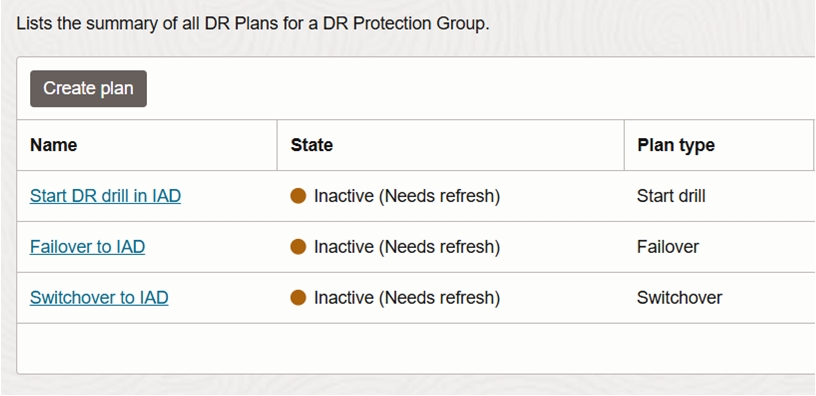
Conclusion
Keeping up with change can be complex, but Full Stack DR has made the job of managing change just a little simpler with this new enhancement. The new DR Plan refresh feature automatically rebuilds plans, while protecting the user-defined steps that you have taken so much time to perfect.
Want to know more?
We’ve updated our documentation about adding member resources to include the new DR Plan Refresh features. We’ve also written a tutorial in Oracle Help Center that explains how to use the new feature in more detail.
If you haven’t seen OCI Full Stack Disaster Recovery in action yet, ask your Oracle Cloud Infrastructure account team to set up a demonstration today. For more information, including documentation, pricing, tutorials, customer success stories, tutorials, and hands-on labs, visit Full Stack Disaster Recovery.
